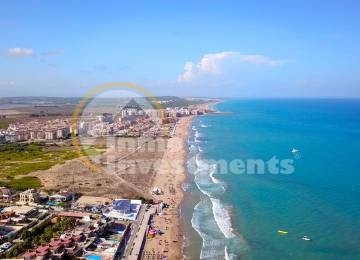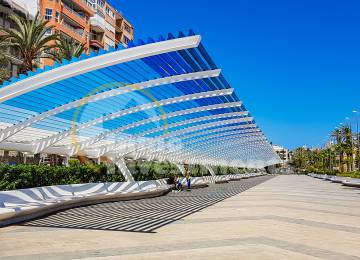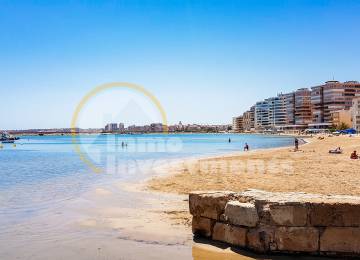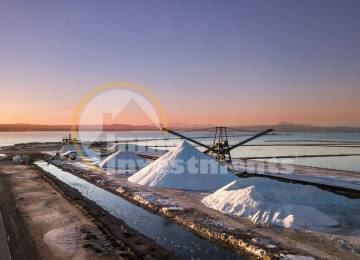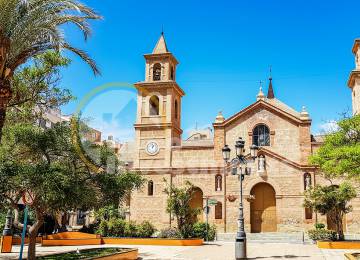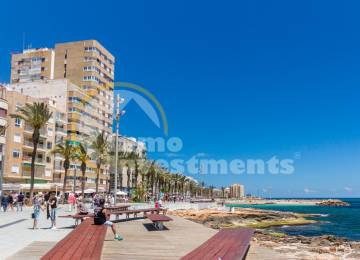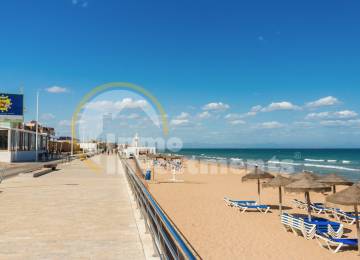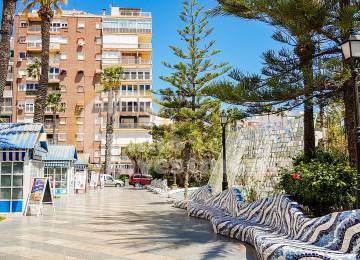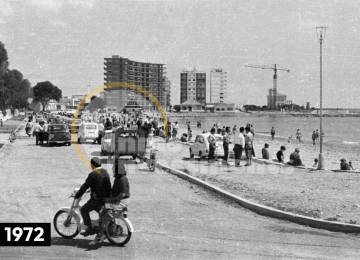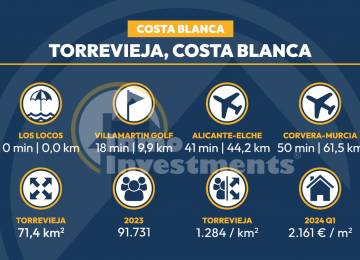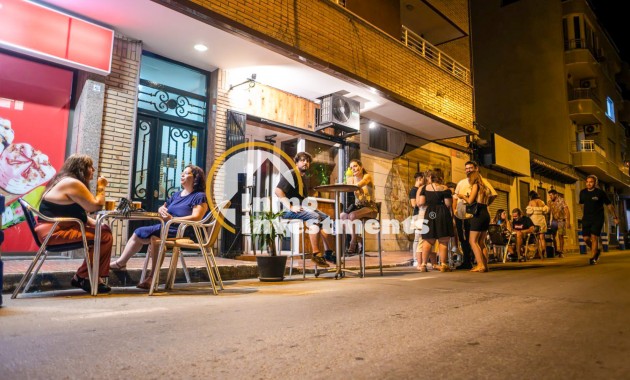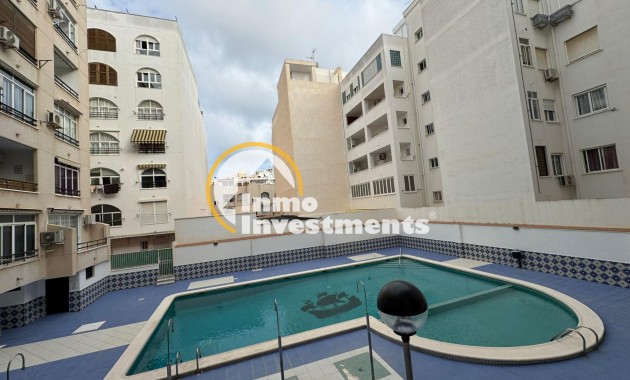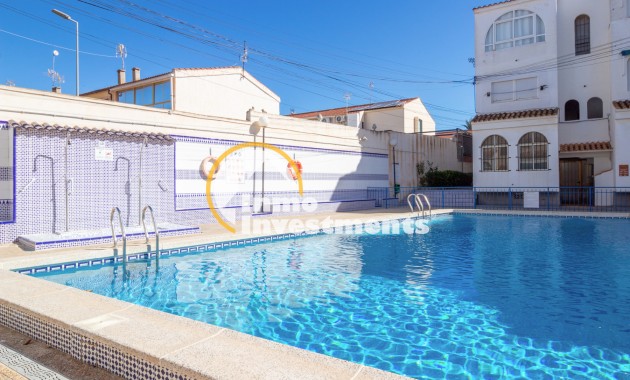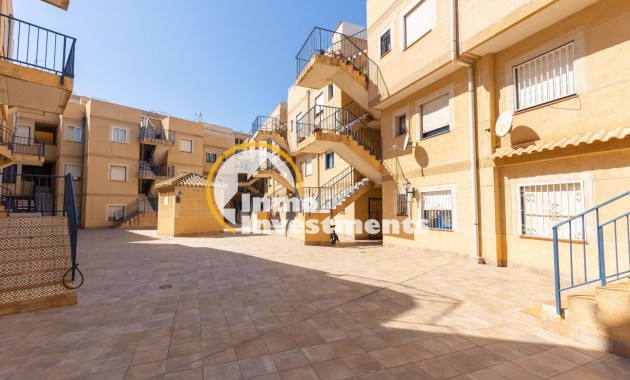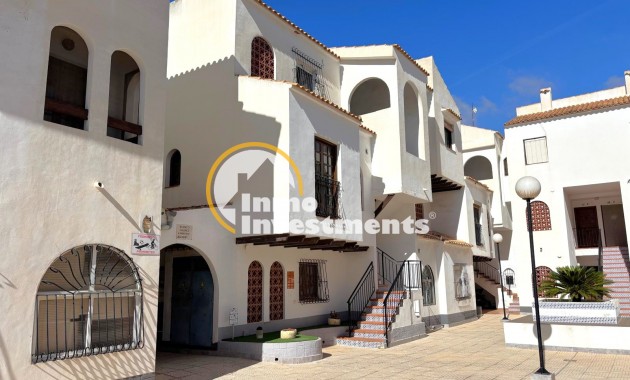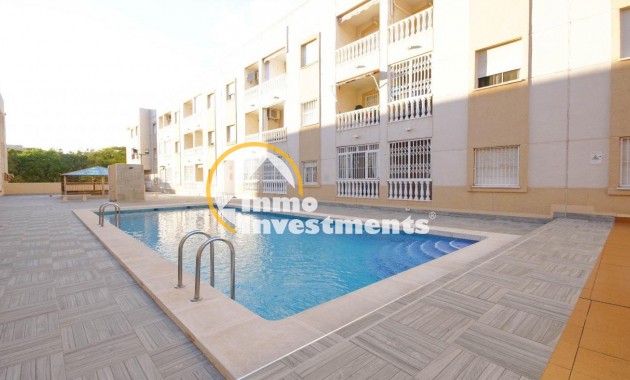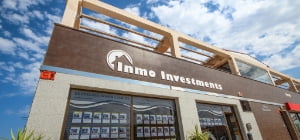Torrevieja
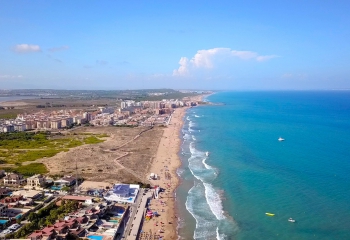
The complete area guide for Torrevieja, Costa Blanca
Vibrant, contemporary, and thoroughly modern, the port city of Torrevieja enjoys an enviable beachfront location that blurs the lines between metropolitan city centre living and Mediterranean resort-style beach life like few other European cities.
Drive through the centre of Torrevieja any weekday late afternoon and you'll witness the effect firsthand, with men and women leaving work for the day headed homeward on one side of the street, whilst on the other, families and couples lounge on a manicured sandy beach and swim in the warm, translucent Mediterranean Sea.
It's something most people won't have experienced and engenders a contrasting urban landscape where early evening bars are frequented by both families in colourful casual beachwear and the sharp-suited executive nine-to-fiver's.
Torrevieja combines the best things you like about your summer holidays with the blue ribbon facilities modern overseas property buyers expect to find in any city centre at home.
The city enjoys a beautiful Mediterranean climate, with temperate and thankfully short winters, combined with long warm summers that stretch from April through to November most years.
The sun is the lifeblood of the local community, and the locale possesses a rich social calendar of events, spectacular fiestas, and an annual spring carnival replete with drag queens that rivals Rio de Janeiro for sheer vivacity.
But whilst fine weather influences local activities, food is a staple ingredient that contributes to the well-being and diversity of the city.
In Spain, food isn't a necessity, it's a revered pastime. Eating out is a well-practised hobby, a cultural and socially inclusive ritual, and it's not unusual for the pursuit of the perfect paella to turn into an enjoyable (if mildly obsessive) city-wide gastronomic crusade.
Culturally diverse and universally accepting, the indigenous Spanish population are overwhelmingly welcoming, and today the south Valencian municipal city is home to more than 90,000 residents of virtually every possible nationality.
With a statistically low crime rate that just keeps falling, it's very easy to feel immediately at home in Torrevieja: comfortable and safe.
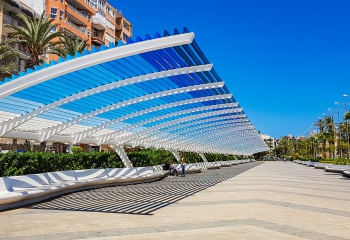
LOCATION
Located immediately adjacent to the warm waters of the Mediterranean Sea, Torrevieja occupies 13 km of prime south Costa Blanca coastline from Torre La Mata in the northernmost quarter, to La Caleta and Mar Azul in the city's southernmost territory.
Bordered by Guardamar del Segura to the north, the Orihuela Costa residential area of Punta Prima to the south, and two salt lakes both inland and to the northeast, the city boasts a locale widely reputed for its high scenic and ecological value.
Alicante-Elche airport is 44 km to the north, with Corvera-Murcia regional airport a little farther away 61 km southwest. Both airports are comfortably reached within an hour by car.
Torrevieja falls under the jurisdiction of its own administrative Town Hall and the N-332 coastal highway runs through the city, providing a direct connection to beachfront destinations along the south Costa Blanca.
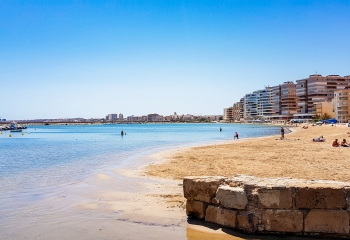
HISTORY
Industrial and commercial activity in Torrevieja pre-date the Roman occupation of Spain, and the discovery of ceramic and bronze archaeological remains close to Laguna de La Mata bears witness to the presence of early Iberian settlers.
Originally nothing more than a fishing and sea salt harvesting community, Torrevieja experienced rapid industrial growth following an edict from King Charles IV that changed the administrative location of the salt lakes.
The Royal Decree was issued in 1803 and in the years that followed, Torrevieja became the centre of operations for salt harvesting and exports, and residential development of the city began.
Less than three decades later, the area suffered a powerful earthquake that virtually razed the city to the ground.
The 6,6 Richter scale quake occurred in March 1829 and is widely regarded as one of the single most important events in Torrevieja's history, reflected by the city's coat of arms which shows the old tower partially destroyed.
By 1870, the population of Torrevieja had swelled to 8,000 and the trade and shipping fleets enjoyed a period of constant expansion, shipping the city's salt to South American destinations.
There was an ever-growing need to build a harbour in the city that could provide fortified safe waters for vessels, and protect boats from the choppy inshore currents that plagued transport ships of the era.
But it wasn't until September of 1929 that the Mayor of Torrevieja, Waldo Calero, finally opened the port we see today - the completion of a mammoth engineering project that started in 1862, some 67 years beforehand.
Today, the 1.6 km long Dique de Levante breakwater still provides the same protection for fishing and leisure vessels, and a walk along this Mediterranean promenade is still among visitor's favourite things to do in the city.
Torrevieja was an early pioneer of tourism, and embracing the burgeoning leisure industry provided residents with alternative employment choices.
The first residential communities (called urbanisations) were constructed in the late 1960s and allied with a growing tourist industry, afforded further prosperity within the local area.
By 1972 Torrevieja was no longer dependent on fisheries and salt exports for its economic well-being, and residential construction became a core component and a major source of income for the city.
Torrevieja has enjoyed more than 50 years of almost uninterrupted development and the city has developed into a bustling and modern beachfront metropolis.
With cutting-edge medical facilities, a healthy local services sector, and boasting vibrant streetside cafes, lively bars, and quality restaurants, Torrevieja is as dynamic and beautiful today as ever.
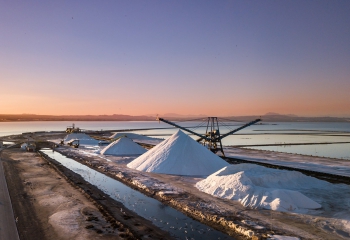
GEOGRAPHY
Torrevieja has a wide variety of geographical features covering more than 70 km² of terrain from fully modern urban landscapes to protected natural wetland environments that are home to thousands of migratory African birds, including the majestic Greater Flamingo.
Two salt lakes flank the locale, one a vivid azure blue, and the other, a natural spectacle full of candy-floss-coloured pink saltwater.
The wetland is revered locally for its undoubted sheer beauty and botanical value, and over the years the Town Hall has established a nature reserve to protect the precious ecosystem.
Typically low-lying except for a high crest in the land to the city's northern-most point at Torre La Mata, Torrevieja benefits from a healthy Mediterranean semi-arid climate characterised by relatively low annual rainfall, and an average of 321 days of sunshine each year with a median annual temperature of 18.3°c.
The city benefits from cool onshore breezes during the summer that offset the heat of the Spanish summer, whilst the perpetually warm Mediterranean waters keep winter temperatures somewhat higher than you might find further inland.
Long warm summers and short dry winters are emblematic of this part of the Costa Blanca, and visitors to the area from June through to September can expect good weather with temperatures varying between 25°c at night to 35°c during the day.
Typically October is the wettest month and August perhaps unsurprisingly the warmest month, but historical climate data shows February to be almost as dry as June.
Most months see no more than 30 mm of rain, and the average sea temperature in the Mediterranean waters surrounding the eastern edge of the city reaches a comfortable 25°c during the summer.
Torrevieja boasts no less than 6 magnificent Blue Flag-accredited beaches. Playa de Los Locos, Playa del Cura, Paseo Maritimo Juan Aparicio, Playa del Acequion, and Playa de Los Naufragos can be found in the city centre, and offer manicured stretches of unspoiled golden sand and a wealth of amenities.
La Mata Beach is located within La Mata Natural Park and provides 2.3 km of pure sand, a resort-style esplanade, and protected natural dunes that offer refuge to exotic Mediterranean flora and fauna.

FACILITIES
Torrevieja possesses all the modern amenities residents and visitors have come to expect from twenty-first-century locales.
Globally, Spain's healthcare system is ranked 26th out of all 195 countries ranked by World Population Review, behind Norway and Germany, but ahead of Portugal and the United Kingdom. The local Torrevieja hospital was internationally recognised as a gold standard example of world-class patient care in 2017.
According to TripAdvisor Torrevieja boasts more than 600 restaurants. For comparison, that's three times the number of restaurants found in the ancient German city of Koblenz, and some one hundred more venues than the English city of Oxford, even though the population of Torrevieja is half the size of the affluent British university town.
The city hosts a Tapas Route twice a year. The popular local event draws eager diners to the city, with participating restaurants offering more than 100 different tapas dishes to sample.
Shopping and leisure amenities are provided within the city proper, and the Habaneras shopping centre provides an open-air mall-style retail venue with more than 60 shops and restaurants set across three floors.
The Paseo del Mar leisure area located immediately adjacent to the port is expected to bring substantial new businesses to the centre of Torrevieja, with a cinema, a bowling alley, and a broad range of restaurants and hospitality venues by the end of 2024.
Local scheduled bus services run throughout the city and connect the urbanisations of Torrevieja with each other, and to the neighbouring coastal communities of La Zenia, Playa Flamenca, Punta Prima, and Campoamor.
As you would imagine in such a modern vibrant city, super-fast fibre-optic broadband services are almost universally available, both to property owners and via shared Wi-Fi connections offered by most bars and restaurants.
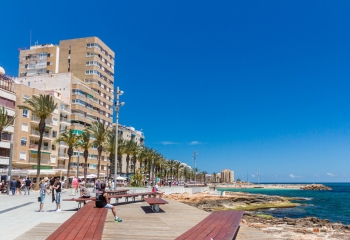
PROPERTIES
The centre of Torrevieja, particularly around the port area, is dominated by apartment blocks generally no higher than seven storeys. However, look a little further back from the seafront and it's easy to find detached single-level dwellings.
Urban areas such as Los Frutales, Calas Blancas Del Mar II, and Los Olivos are suitably centrally located but offer choices of spacious townhouses and villas.
Torre La Mata and La Caleta, on Torrevieja's northernmost and southernmost fringes respectively, are regarded as prestigious resort areas, and properties in these locations often command premium prices.
By contrast, outlying suburban areas such as El Limonar, El Chaparral, and La Siesta offer an excellent variety of properties at comparatively affordable prices.
Nestled between the two salt lakes, you'll find a quieter pace of life adjacent to the splendour of the natural gems, and it's still possible to find a modest townhouse or apartment here for under €80,000.
Undoubtedly city centre apartments outnumber all other types of accommodation in Torrevieja, and prices for a central apartment within walking distance of a beach typically start around €70,000.
These apartments make excellent investment properties. With a relatively low purchase cost, low running costs, and ease of renting year-round, they are expected to reap dividends with excellent rental returns.
But the sheer scale of the city and the variety of the topography that surrounds it, has resulted in a wealth of choice for prospective property buyers in Torrevieja, and a detached villa could be yours for around €275,000.
After nearly 50 years of perpetual development, Torrevieja has minimal scope for future development. Only one major open area remains undeveloped, between the El Chaparral residential community and the N-332 corridor adjacent to the city's auditorium.
The land at La Hoya covers an area of nearly two million square metres, and development of the new €53 million urbanisation began in January 2024 with the developers promising to deliver 7,490 new homes.
But with Torrevieja at the limits of protected wetlands to the northern periphery of the city, the area has limited potential for future expansion and new build construction.
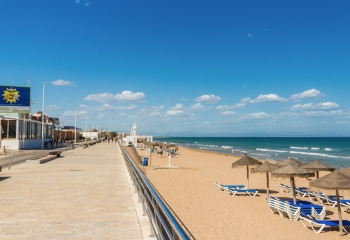
SUMMARY
Torrevieja is exceptionally popular with tourists all year round and has a large population of full-time residents from a variety of cultural nationalities – this means that the shops, bars, and restaurants are full of life no matter if it is summer or winter.
Its premium beachfront location attracts a wide spectrum of visitors during the extended Spanish summer season, whilst people flock to Torrevieja for short breaks and winter sun out of season.
Packed with history, culture, and non-stop high-quality amenities, Torrevieja boasts a central location that offers relatively close proximity to a choice of airports whilst remaining free of regular flight traffic overhead.
The city will appeal to overseas property buyers who value immediate access to Blue Flag beaches, whether they are looking for an inexpensive lock-up-and-go holiday home for long weekends away, or something more suited to a quieter pace of life and full-time living.
With some of the lowest prices in the south Costa Blanca and a diverse choice of properties available, Torrevieja is a great choice of location whatever it is you are looking for.
Start looking for your perfect home in Spain, click here to see all properties available in Torrevieja right now.
Data included in the graphics are correct at the date of publication. Price per square metre is for illustration only, and calculated from the prices of resale properties available on our website at that time. For official market data, please contact us.








 Back
Back